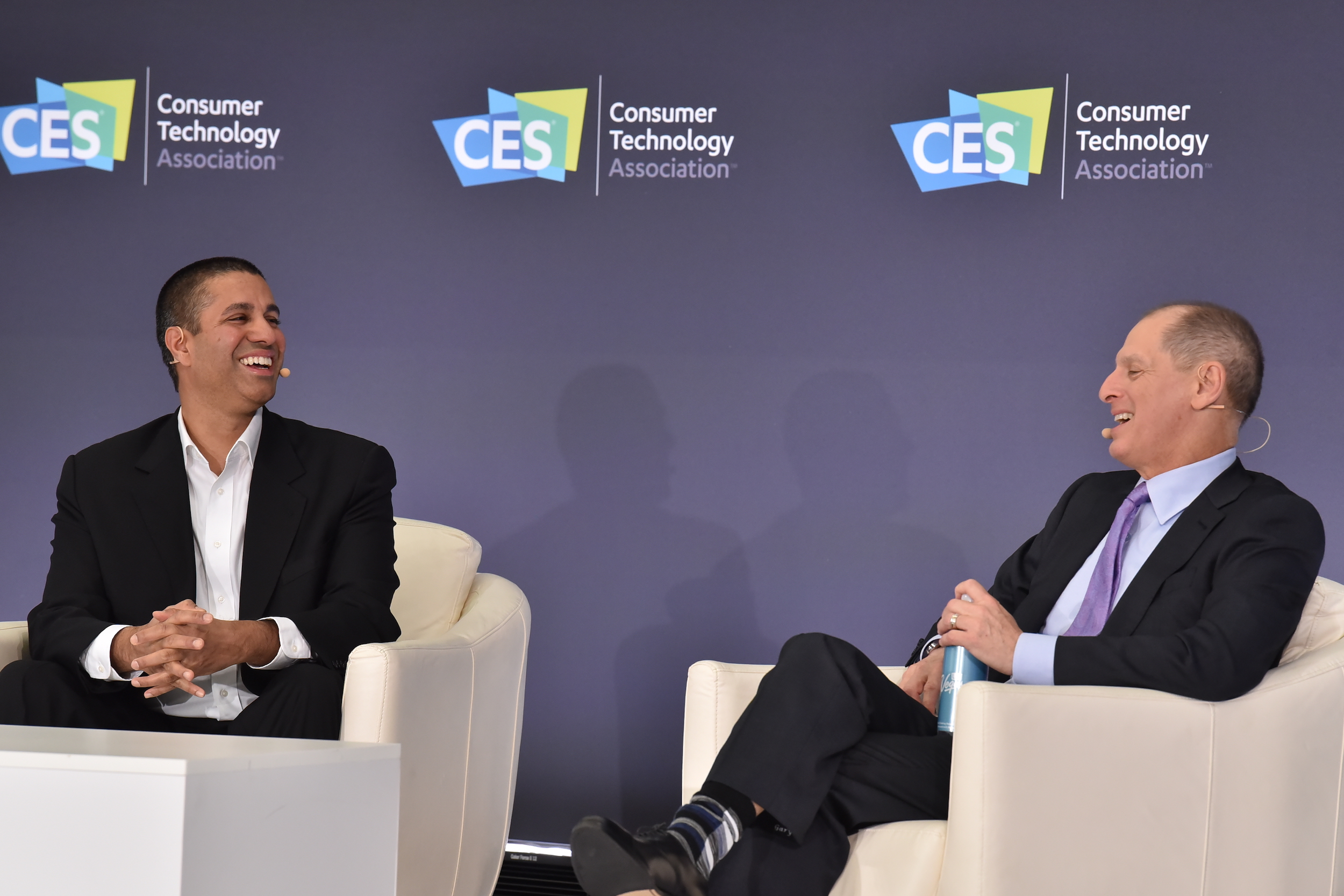CES 2020: FCC’s Pai Says 5G Can Help Close Rural Divide

FCC chairman Ajit Pai told a CES crowd that he thought 5G wireless technology could indeed help close the rural digital divide but conceded there were challenges to building out the next-generation technology to wherever it needed to go.
Pai was interviewed by Consumer Technology Association president and CEO Gary Shapiro Tuesday (Jan. 7) at CTA’s CES 2020 techstravaganza in Las Vegas Tuesday.
A tieless and relaxed Pai was asked by Shapiro if 5G wasn't more geared to urban and suburban markets. The chairman took some issue with that assertion.
In terms of smartphones, Pai said, 5G might be more a "big city use case," but he saw opportunities for fixed wireless, which was why he was bullish on the trial window for the spectrum in the 2.5-gigahertz band. He also pointed to precision agriculture and telemedicine.
RELATED: CES 2020: FCC's Starks Says Big Data Means Big Responsibility
Shapiro said another solution to the rural divide was Microsoft's airband proposal, which would use the so-called white spaces between TV channels for unlicensed applications. Pai said he encouraged that and other innovative solutions.
Growing up in rural America, Pai said he understood why some feel opportunity there was limited by a lack of broadband access, and why young people felt they needed to move to the city to capitalize on the opportunities broadband affords. He said he did not want that to be the case anywhere in the country.
The smarter way to stay on top of broadcasting and cable industry. Sign up below
5G Hurdles to Climb
Asked about the barriers to 5G buildout, Pai said it was not cheap, and that to create a buildout on a nationwide scale was a pretty massive undertaking. Spectrum was a constraint, which is why the FCC was focused on freeing it up, he said. Another limit: Finding the work crews to do the tough job of actually building out the infrastructure.
On the spectrum issue, Pai suggested getting incumbent users, including government agencies, to share spectrum was crucial, but another one of those impediments. Asked what Congress could do to help speed 5G, Pai suggested “more clarity about spectrum policy.”
Pai has gotten pushback on proposals to free up spectrum in various bands, including the C-band, and 5.9 GHz and 6 GHz bands, by sharing it with incumbent users. Those include auto makers and utility companies (6 GHz), as well as broadcasters and government users, all of which have raised issues. Pai didn't cite any of those concerns specifically, but said most bands the FCC is looking at have incumbents and everybody has to think more about sharing.
Asked about that 6 GHz band, Pai suggested that, incumbent recalcitrance aside, the FCC has to "find a way to share this public resource." He said there were unimaginable benefits for freeing up some of that 1,200 megahertz of 6 GHz spectrum, including for augmented reality (AR) and virtual reality (VR). "Our goal is to remove spectrum as a constraint on unlicensed innovation," he told Shapiro.
Pai said the U.S. was a leader in 5G. Shapiro asked whether he meant in deployment or innovation. Pai said both.
Shapiro pointed to wireless firms Nokia and Ericcson, neither of which are American. Pai conceded there were no U.S.-based suppliers, but that U.S. companies were innovating in virtualizing networks, which would increase security and decrease cost, and that the U.S. had been a leader in the software that would provide the basis for that.
His CES Debut
It was Pai's first appearance as chairman, a point Shapiro made several times, joking that he might not show up again this year — Pai cited the government shutdown for his absence last year.
Shapiro asked Pai whether “the sky had fallen” — as some activist groups had predicted would be the case — since the FCC's Restoring Internet Freedom eliminated network-neutrality rules almost two years ago.
Pai said that, on the contrary, broadband speeds were up, investment was up, and more fiber was being built out. Pai joked that it has become faster and easier for more Americans to "hate tweet their favorite FCC chairman," which he called an indicator of the order's success.
On a serious note, Pai said the net neutrality battle had been more about politics than policy and he wanted to put the hateful rhetoric — threats were made against him and his family — ”in the rearview mirror.”
Contributing editor John Eggerton has been an editor and/or writer on media regulation, legislation and policy for over four decades, including covering the FCC, FTC, Congress, the major media trade associations, and the federal courts. In addition to Multichannel News and Broadcasting + Cable, his work has appeared in Radio World, TV Technology, TV Fax, This Week in Consumer Electronics, Variety and the Encyclopedia Britannica.

